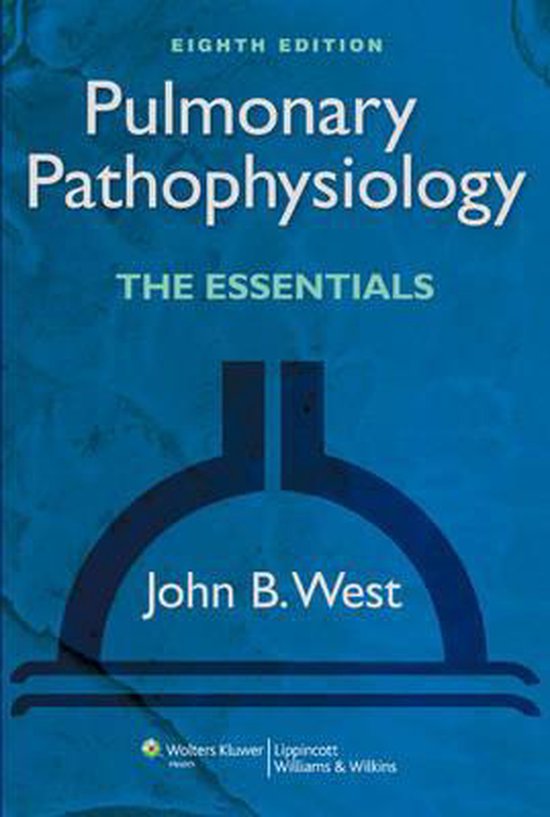Longen
1
–
Figuren
boek
en
formules
HFDST
1.
Structuur
en
functie
Ademminuutvolume
(AMV)
AMV
=
V’E
=
bf
x
Vt
bf
=
breathing
frequency;
Vt
=
teugvolume
De
partiële
druk
van
een
gas
X
(wet
van
Dalton),
PX
PX
=
FI
x
(PB
–
PH20)
FI
=
volumefractie
van
dat
gas;
PB
=
de
totale
gasdruk
=
de
barometerdruk;
PH20
omdat
volume
fractie
wordt
uitgedrukt
in
droge
lucht
fractie
Anatomie
volgens
Weibel
Geleidende
zone:
luchtweggeneratie
0
à
16.
Bevloeit
door
bronchiale
circulatie.
Rol
van
deze
bronchiaal
boom
is
de
geleiding
van
lucht
naar
het
alveolaire
oppervlak
waar
uiteindelijk
de
gasuitwisseling
zal
plaatsvinden.
Dit
is
de
anatomisch
dode
ruimte
(150
ml):
wel
ventilatie
maar
geen
perfusie
dus
geen
gasuitwisseling.
Bronchiolen
voorzien
de
secundaire
lobuli
van
de
long.
Vanaf
generatie
17
de
eerste
longblaasjes,
dus
Respiratoire
zone:
luchtweggeneratie
17
à
23.
Generatie
23
bevat
enkel
nog
maar
longblaasjes.
Bevloeit
door
pulmonale
circulatie.
Alveolaire
regio
2,5-‐3
liter.
Respiratoire
bronchiolen
voorzien
de
primaire
lobuli
van
de
long.
Hoe
verder
naar
beneden,
hoe
kleiner
het
aandeel
van
kraakbeen
wordt
en
hoe
groter
het
aandeel
van
glad
spierweefsel.
Acinus
=
distale
deel
van
de
terminale
bronchiolen
dat
een
anatomische
eenheid
vormt
waar
de
gasuitwisseling
plaatsvindt.
(bestaat
uit
terminale
bronchiolus,
alveolaire
kanalen
en
alveolaire
zak
die
een
cluster
van
alveoli
bevat)
500
miljoen
alveoli.
,
Doorgankelijkheid
per
luchtweggeneratie
De
diameter
van
de
afzonderlijke
takken
zal
verkleinen,
maar
doordat
je
steeds
meer
en
meer
vertakkingen
hebt
zal
de
cross-‐sectionele
diameter
vergroten.
In
de
bovenste
luchtwegen
heb
je
dus
een
kleine
cross-‐sectionele
diameter
(dus
een
hoge
weerstand)
dus
een
hoge
snelheid
van
de
volumestroom.
Hier
ventilatie
door
middel
van
bulk
flow.
In
de
lagere
luchtwegen
(dus
vanaf
de
terminale
bronchiolen),
zal
de
cross-‐sectionele
diameter
exponentieel
stijgen
(dus
een
lage
weerstand),
waardoor
we
hier
een
lage
snelheid
van
de
volumestroom
krijgen.
Ventilatie
wordt
hier
gedreven
door
diffusie.
Stoffen
zoals
nicotine
en
teer
blijven
door
de
lage
snelheid
van
de
volumestroom
in
de
lagere
luchtwegen
zitten.
Tot
en
met
generatie
5
zien
we
een
stijging
van
de
weerstand,
vanaf
dan
zal
die
alleen
maar
dalen.
Poriën
van
Kohn
=
intra-‐alveolaire
connecties,
discrete
gaatjes
in
de
wand
van
aanliggende
alveoli.
Alveoli
bekleedt
met
surfactant
>
alveolaire
epitheelcellen
type
II.
Zorgt
voor:
-‐
verlagen
van
de
oppervlaktespanning
dus
de
ademarbeid
-‐
stabiliseert
de
alveoli
-‐
voorkomt
transsudatie
van
vocht
(vocht
van
de
bloedbaan
in
de
alveoli)
Longen
staan
in
contact
met
de
buitenwereld
dus
verdedigingsmechanismen
nodig.
-‐
mucus
in
neus
en
keelholte:
vangen
schadelijke
deeltjes
-‐
trilharen
in
de
bronchi:
vervoeren
schadelijke
deeltjes
-‐
macrofagen
in
de
alveoli:
omsluiten
de
deeltjes
en
voeren
het
weg
via
het
lymfestelsel
,Vragen
1.
Concerning
the
blood-‐gas
barrier
of
the
human
lung:
A.
The
thinnest
part
of
the
blood-‐gas
barrier
has
a
thickness
of
about
3
μm.
B.
The
total
area
of
the
blood-‐gas
barrier
is
about
1
square
meter.
C.
About10%oftheareaofthealveolarwallisoccupiedbycapillaries.
D.
If
the
pressure
in
the
capillaries
rises
to
abnormally
high
levels,
the
blood-‐gas
barrier
can
be
damaged.
E.
Oxygen
crosses
the
blood-‐gas
barrier
by
active
transport.
2.
When
oxygen
moves
through
the
thin
side
of
the
blood-‐gas
barrier
from
the
alveolar
gas
to
the
hemoglobin
of
the
red
blood
cell,
it
traverses
the
following
layers
in
order:
A.
Epithelial
cell,
surfactant,
interstitium,
endothelial
cell,
plasma,
red
cell
membrane
B.
Surfactant,
epithelial
cell,
interstitium,
endothelial
cell,
plasma,
red
cell
membrane
C.
Surfactant,endothelialcell,interstitium,epithelialcell,plasma,red
cell
membrane
D.
Epithelium
cell,
interstitium,
endothelial
cell,
plasma,
red
cell
membrane
E.
Surfactant,
epithelial
cell,
interstitium,
endothelial
cell,
red
cell
Membrane
3.
What
is
the
Po2
(in
mm
Hg)
of
moist
inspired
gas
of
a
climber
on
the
summit
of
Mt.
Everest
(assume
barometric
pressure
is
247
mm
Hg)?
A.
32
B.
42
C.
52
D.
62
E.
72
4.
Concerning
the
airways
of
the
human
lung:
A.
The
volume
of
the
conducting
zone
is
about
50
ml.
B.
The
volume
of
the
rest
of
the
lung
during
resting
conditions
is
about
5
liters.
C.
Arespiratorybronchiolecanbedistinguishedfromaterminal
bronchiole
because
the
latter
has
alveoli
in
its
walls.
D.
On
the
average,
there
are
about
three
branchings
of
the
conducting
airways
before
the
first
alveoli
appear
in
their
walls.
E.
In
the
alveolar
ducts,
the
predominant
mode
of
gas
flow
is
diffusion
rather
than
convection.
,
5.
Concerning
the
blood
vessels
of
the
human
lung:
A.
The
pulmonary
veins
form
a
branching
pattern
that
matches
that
of
the
airways.
B.
The
average
diameter
of
the
capillaries
is
about
50
μm.
C.
Thebronchialcirculationhasaboutthesamebloodflowasdoesthe
pulmonary
circulation.
D.
On
the
average,
blood
spends
about
0.75
s
in
the
capillaries
under
resting
conditions.
E.
The
mean
pressure
in
the
pulmonary
artery
is
about
100
mm
Hg.
6.
A
65-‐year-‐old
man
complained
of
worsening
dyspnea
on
exertion
over
a
6-‐month
period.
A
lung
biopsy
was
done
because
of
changes
seen
on
chest
imaging.
The
pathology
report
states
that
the
thickness
of
the
thin
side
of
the
blood-‐gas
barrier
is
greater
than
0.8
μm
in
most
of
the
alveoli.
Which
of
the
following
would
you
expect?
A.
Decreased
rate
of
diffusion
of
oxygen
into
the
pulmonary
capillaries
B.
Increase
in
volume
of
individual
red
cells
C.
Increasedriskofruptureoftheblood-‐gasbarrier
D.
Slower
diffusion
of
gas
from
the
distal
airways
to
the
alveoli
E.
Decreased
alveolar
surfactant
concentrations
HFDST
2.
Ventilatie
Volumestroom
gaat
van
hoge
naar
lage
druk.
Onderdruk
in
de
longen
zorgt
voor
inspiratie.
Bovendruk
in
de
longen
zorgt
voor
expiratie.
In
de
ideale
long
is
er
sprake
van
een
uniforme
ventilatie
en
een
uniforme
perfusie,
waarbij
de
V/Q
ratio
gelijk
is
aan
1.
Ventilatie
Anatomisch
dode
ruimte
(150
ml)
=
de
inhoud
van
de
eerste
16
generaties
van
de
luchtwegen,
de
geleidende
zone
dus.
Teugvolume
(Vt)
=
500
ml,
bij
elke
inspiratie
komt
zo
een
volume
binnen
in
de
long,
en
zo
een
volume
gaat
er
weer
uit
bij
elke
expiratie.
Hoe
groter
het
aandeel
van
de
anatomisch
dode
ruimte
wordt,
hoe
kleiner
het
aandeel
vers
gas
dat
de
alveoli
zal
bereiken.






